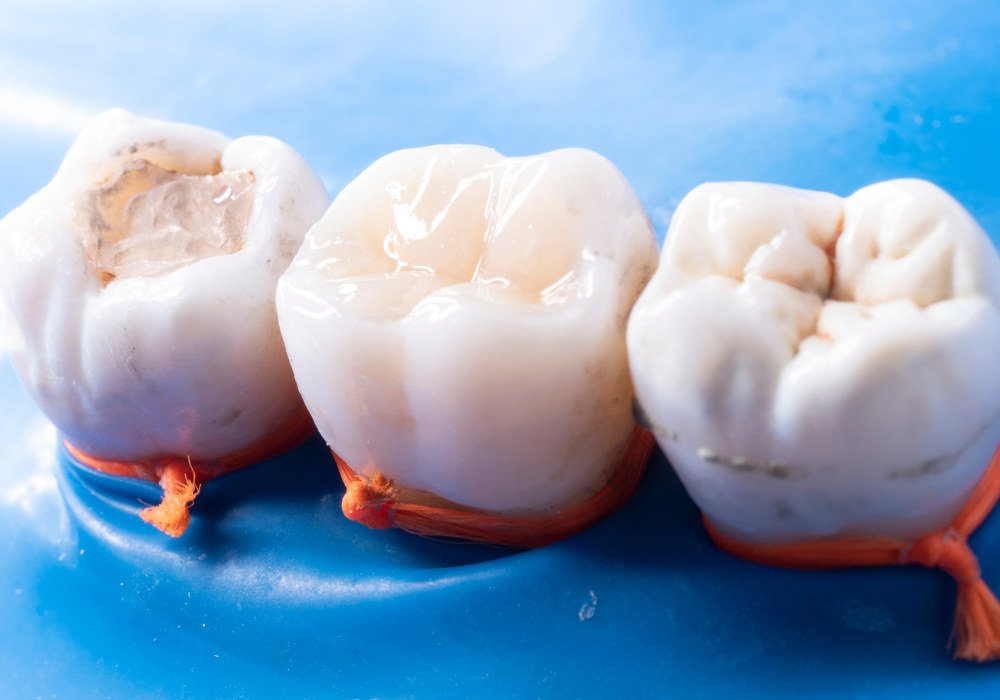Composite Fillings: A Modern and Aesthetic Solution for a Healthy Smile

Dental health plays a big role in general well-being. So it’s important to choose high-quality and permanent repair treatment, when dealing with cavities or tooth damage. Because of its advantages in both appearance and functionality, composite fillings are among the most contemporary and widely used options for dental restorations.
In this article will be considered the definition of composite fillings, their primary benefits and drawbacks, and the variables influencing their lifetime.
What Are Composite Fillings?
A contemporary form of dental filling material, composite fillings are made of polymeric resins enhanced with ceramic, glass-ceramic, or quartz microparticles. This unique composition ensures high strength, a natural appearance and excellent adhesion to tooth structure.
Composite fillings perfectly match with natural teeth and are almost invisible, unlike amalgam fillings, which have a metallic tint. Furthermore, they chemically bond with tooth tissue, providing a strong and long-term restoration.
How Do Composite Fillings Work?
- Tooth Preparation: The dentist removes the decayed part of the tooth and applies special solutions to the surface to improve adhesion.
- Composite Material Application: The dentist applies the composite material in layers, each of which is cured under a special LED lamp.
- Filling Shaping: The dentist carefully shapes filling to the tooth’s anatomical structure, this ensures a comfortable feeling and natural bite.
- Final Polishing: Filling is polished to create a smooth surface and a natural appearance.
Composite fillings are versatile and used not only for cavity restorations but also for repairing teeth chips, cracks and also for improving tooth aesthetics. So most of the dentists recommended this type of fillings.
Advantages of Composite Fillings
Composite fillings are among the greatest options for dental repair because of their special qualities, which provide a host of advantages:
✔ Superior Aesthetics: The infill is nearly undetectable due to the material’s ability to match colors precisely.
✔ Minimally Invasive: Сomposite fillings require minimal tooth removal, unlike amalgam or metal-ceramic restorations.
✔ Strength and Durability: Their robust chemical composition enables composite fillings to withstand significant chewing forces and last up to 10 years.
✔ Excellent Adhesion: Modern adhesive techniques allow composite fillings to form a strong bond with tooth tissue, which lowers the chance of developing secondary caries.
✔ Biocompatibility: Composite materials do not contain mercury or other harmful substances, making them safe for overall health.
✔ Easy Repairability: If a composite filling chips or wears down, it can be repaired without needing complete replacement.
✔ Quick Procedure: Depending on the extent of the repair, applying a composite filling might take anywhere from 30 to 1 hour.
Disadvantages of Composite Fillings
Composite fillings have a few disadvantages, despite their advantages, that should be taken into account before choosing them:
❌ Prone to Wear and Tear: Composite fillings, especially in molars, might deteriorate with time, especially who have bruxism or tooth grinding.
❌Possible Staining : Over time, the substance may get discolored as a result of absorbing colors from tobacco, red wine, tea, and coffee.
❌ Moisture Sensitivity During Placement: Composite fillings require a dry working environment to adhere properly, which can make the procedure more complex in certain areas of the mouth.
❌ Less Durable Than Ceramic Restorations: Although contemporary composites are robust, ceramic restorations have a longer lifespan (15+ years) than composites (7–10 years).
Composite Filling Durability
The lifespan of composite fillings depends on various factors:
- Tooth Location: Because front teeth are subjected to less biting pressure than molars, their fillings usually survive longer than in other teeth.
- Oral Hygiene: Composite fillings last longer when you brush, floss, and have regular dental cleanings.
- Filling Size: Biting nails, using teeth to open bottles, and biting hard items can cause filling fractures.
- Lifestyle Habits: Larger fillings deteriorate more quickly, especially in high-pressure chewing areas.
Average Lifespan of Composite Fillings:
Front Teeth: 7-10 years
Molars: 5-8 years
How to Care for Composite Fillings?
Use these important maintenance guidelines to extend the life of composite fillings and preserve their aesthetics:
- Brush twice a day with a soft-bristled toothbrush and non-abrasive toothpaste to prevent harming the surface of the filling.
- Steer clear of staining foods like red wine, berries, tea, and coffee.
- To avoid secondary decay and plaque accumulation, use a water flosser and dental floss.
- Visit your dentist every 6 months for check-ups and professional cleanings.
- Avoid biting hard objects – chewing on nuts, ice or hard candies can cause the filling to chip or crack.
Conclusion
Composite fillings are an excellent choice for patients looking for an aesthetically pleasing, durable, and safe solution for cavity restoration or tooth repair. When properly cared for, they provide a natural appearance, robust adhesion, and long-lasting function.
At KClinics, we use only the highest-quality composite materials, ensuring both comfort and durability. Schedule a consultation today, and our expert dentists will help you choose the best solution for your perfect smile!



